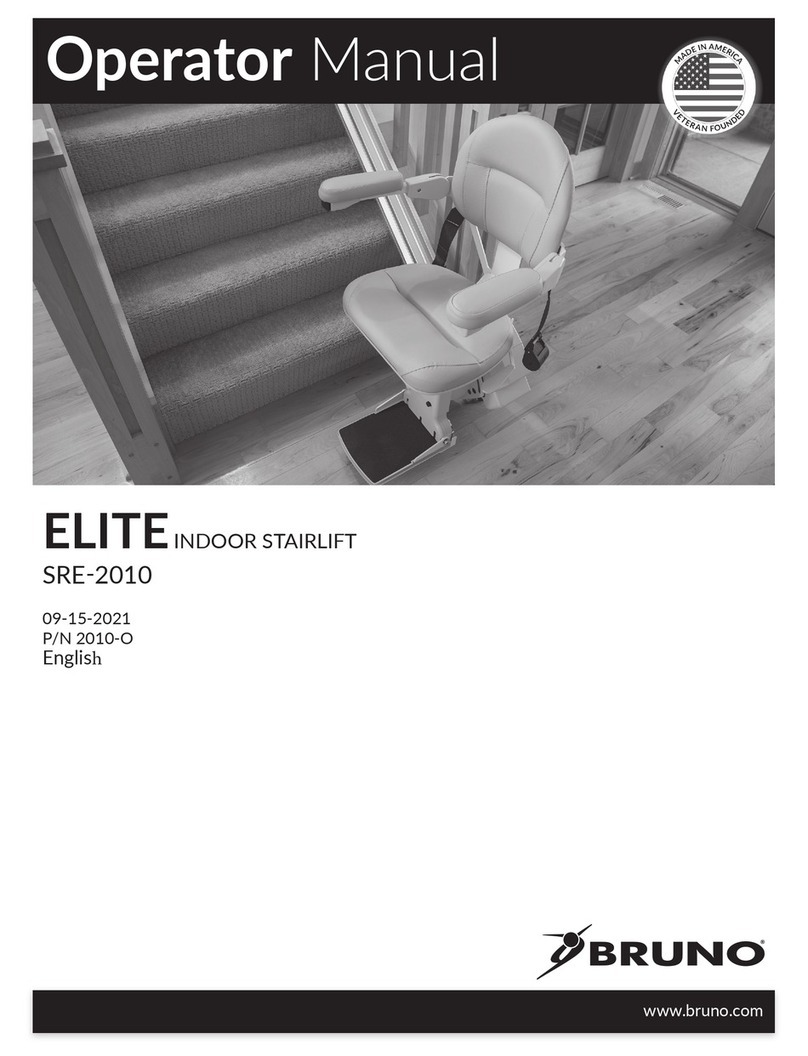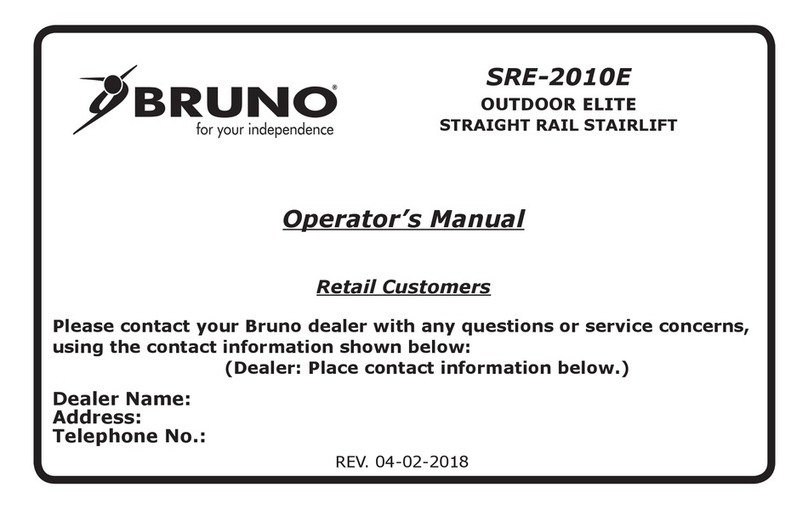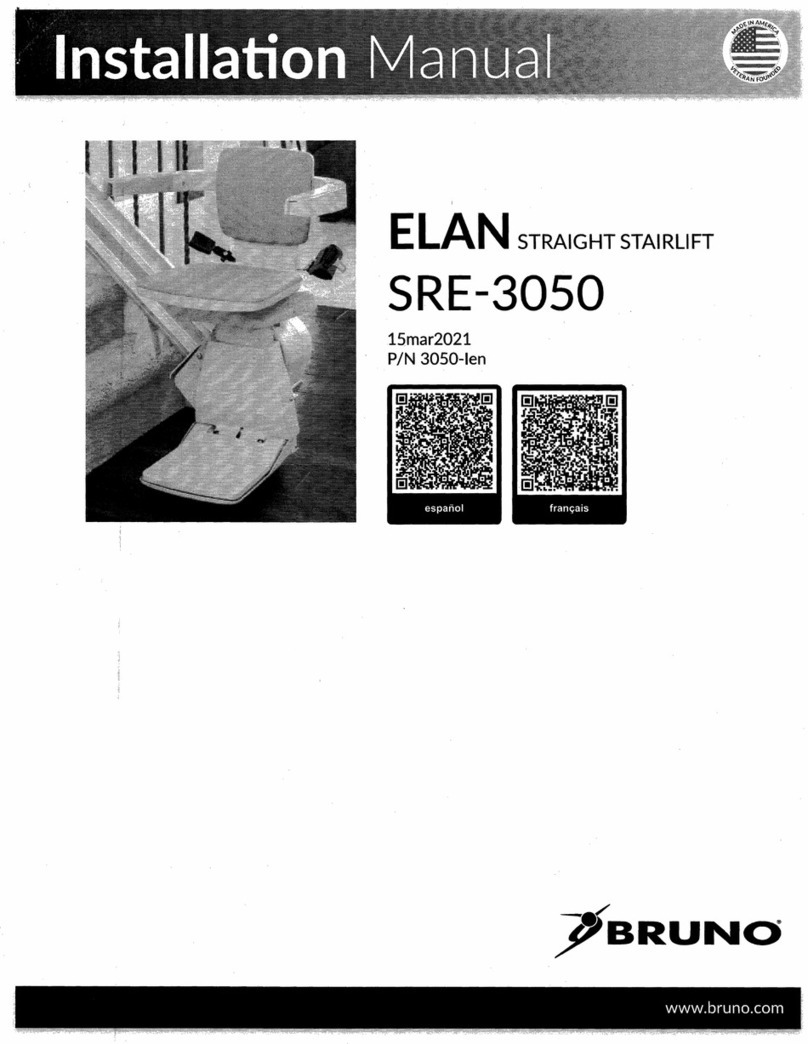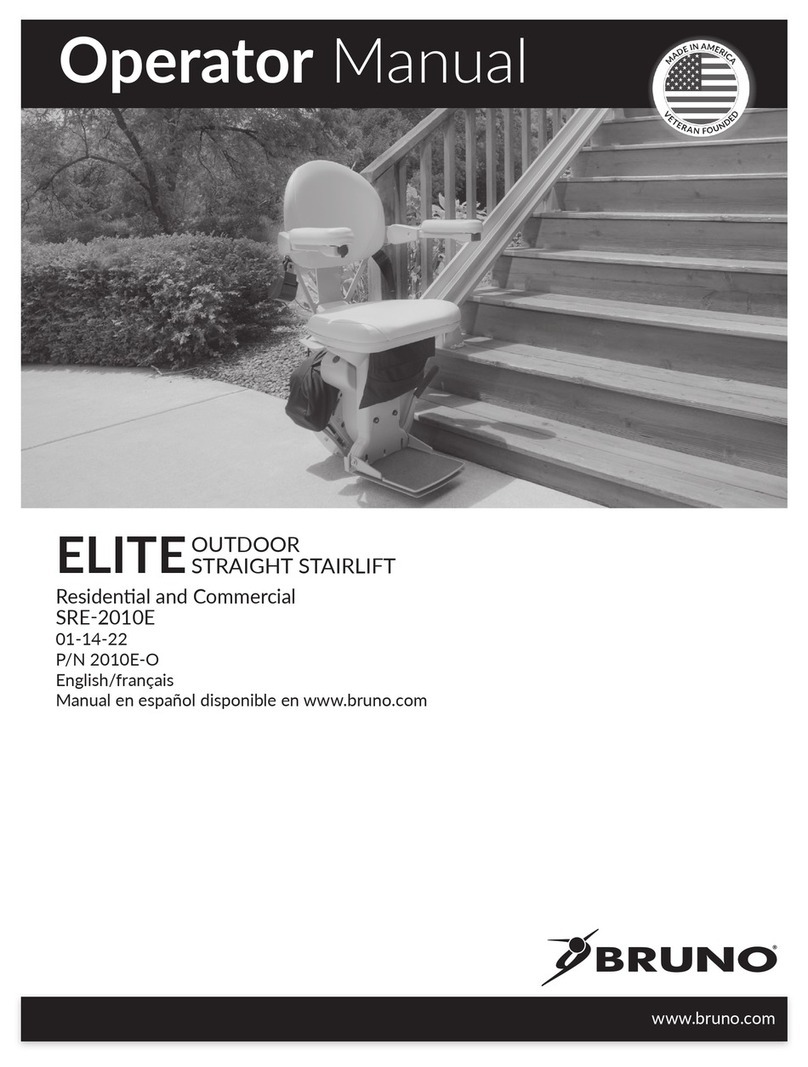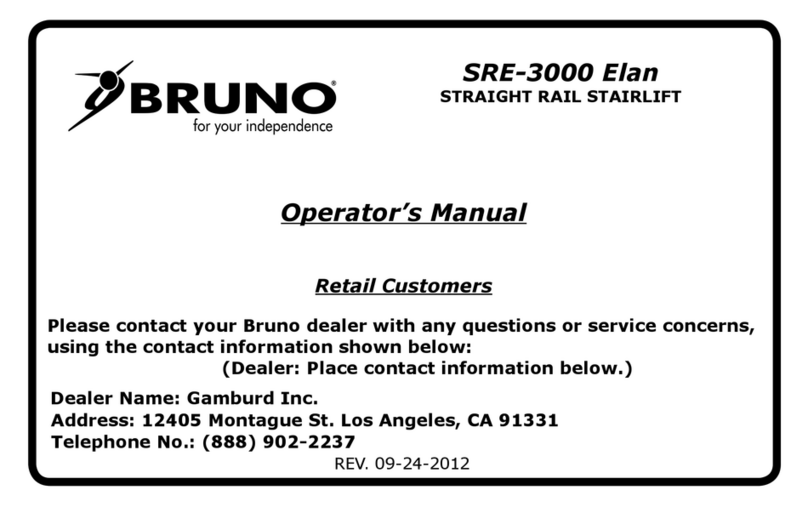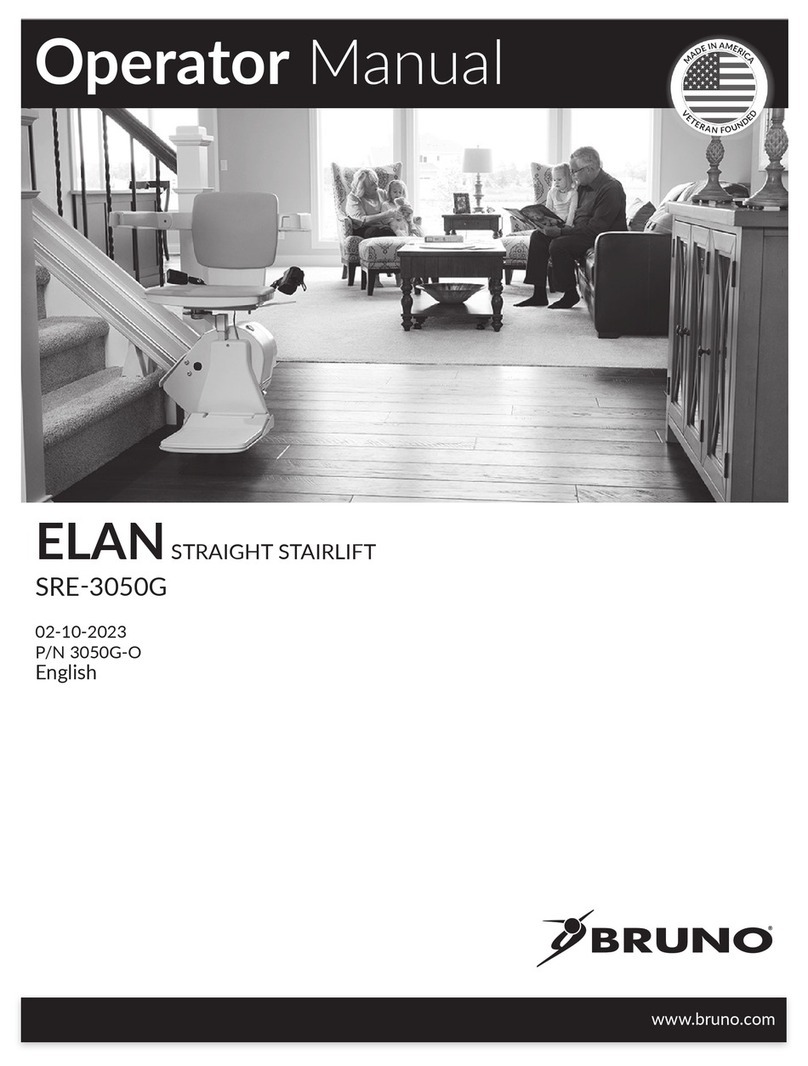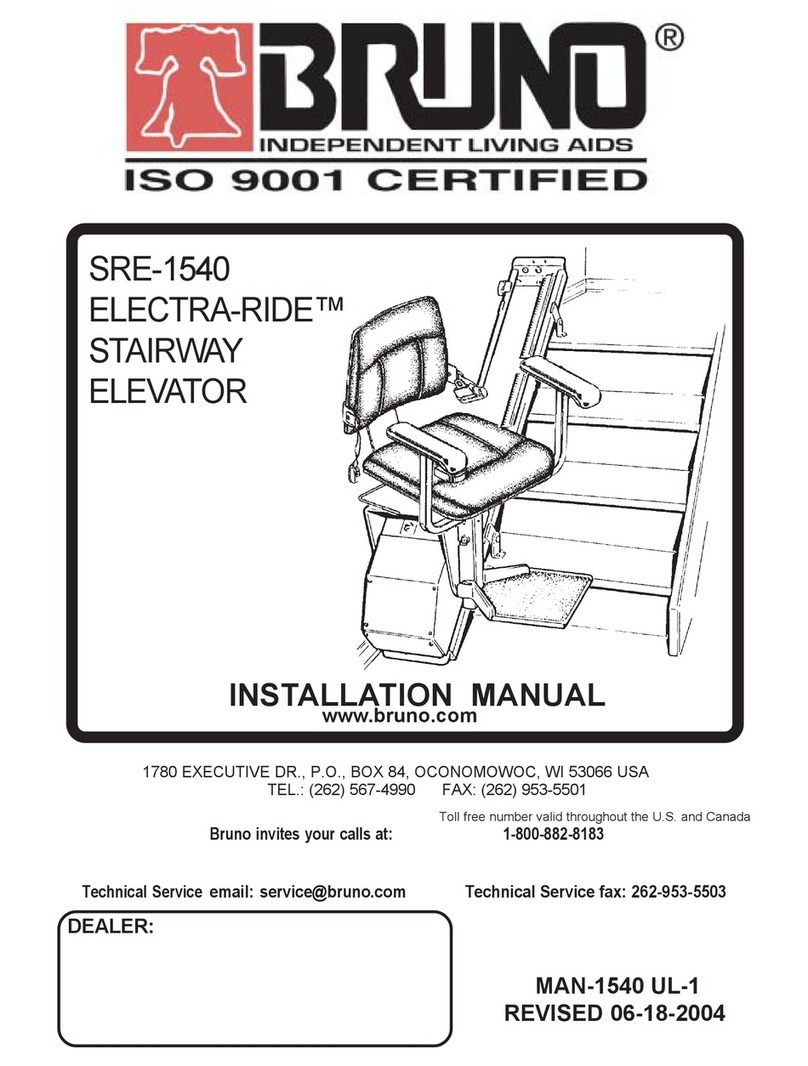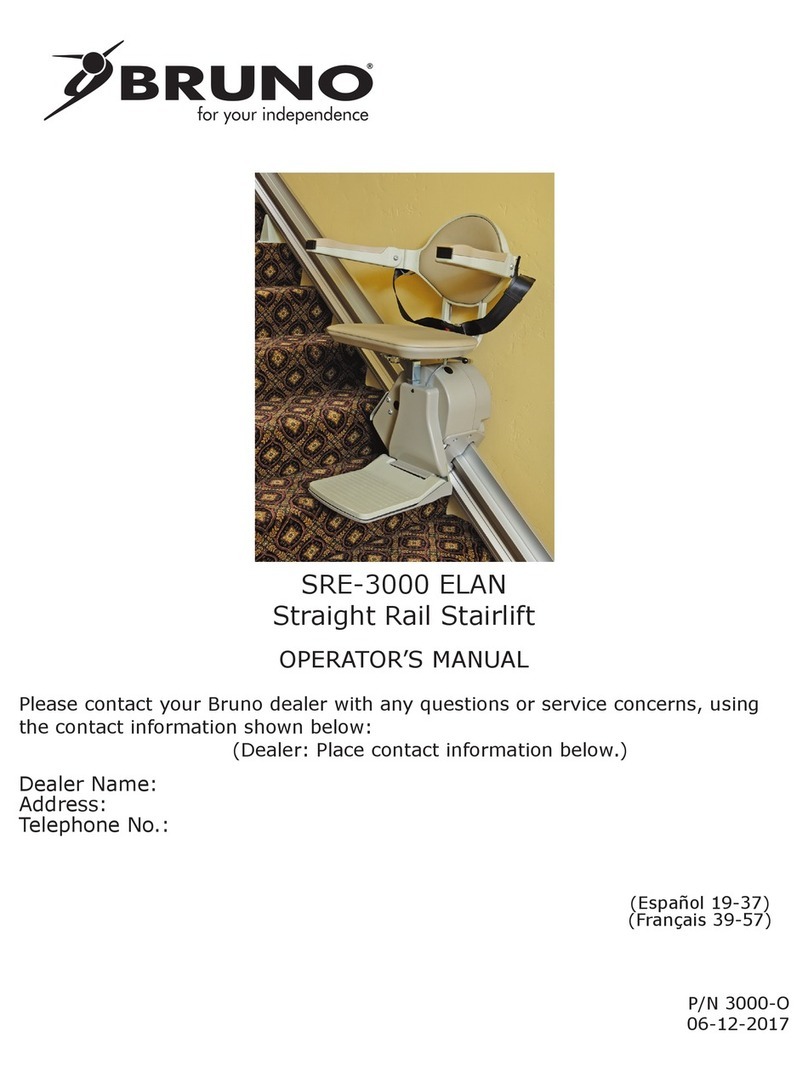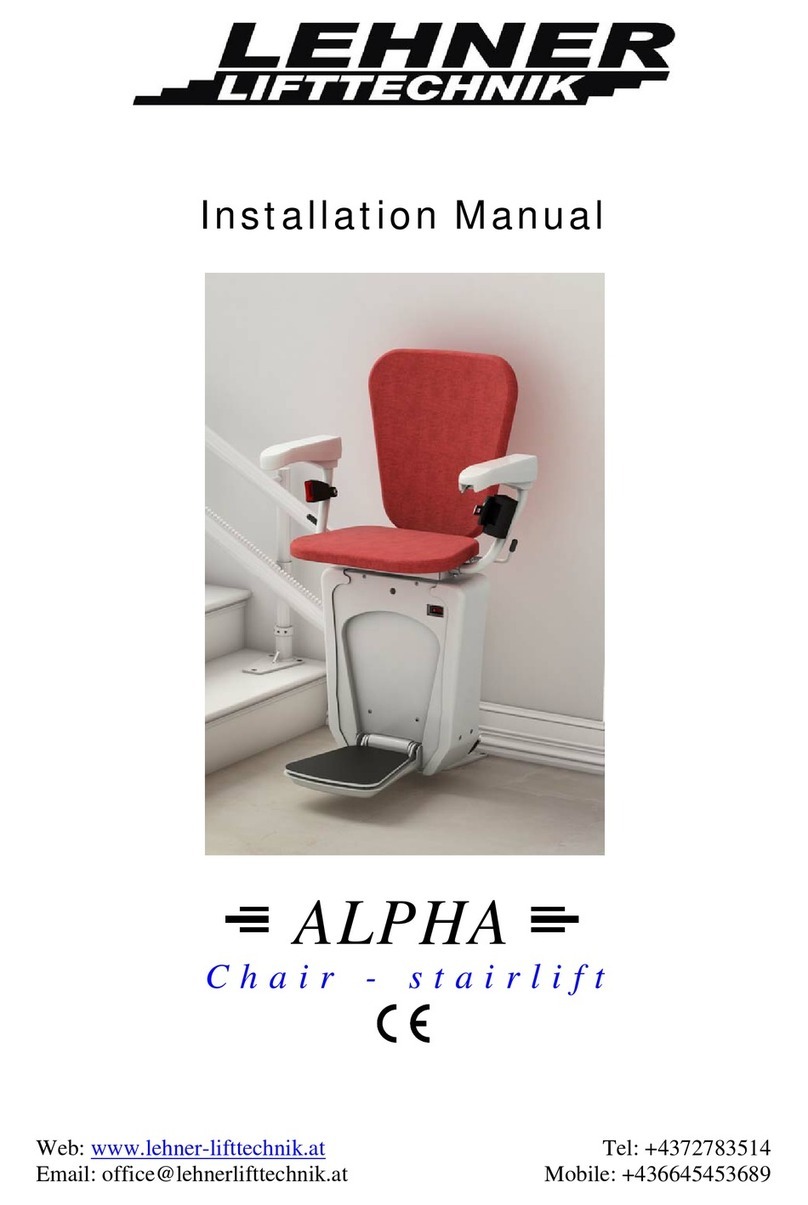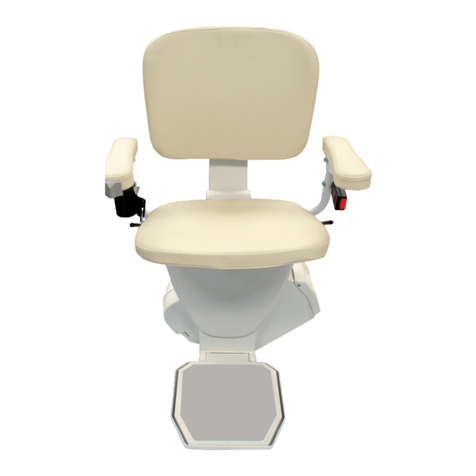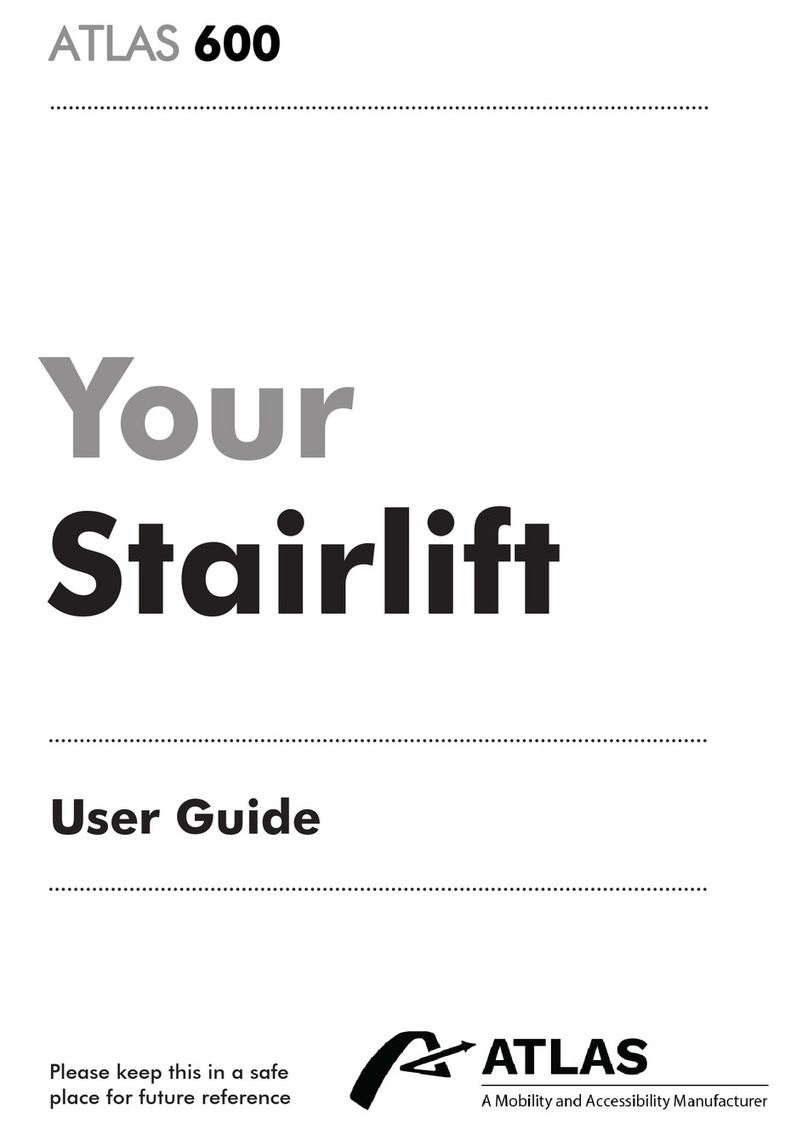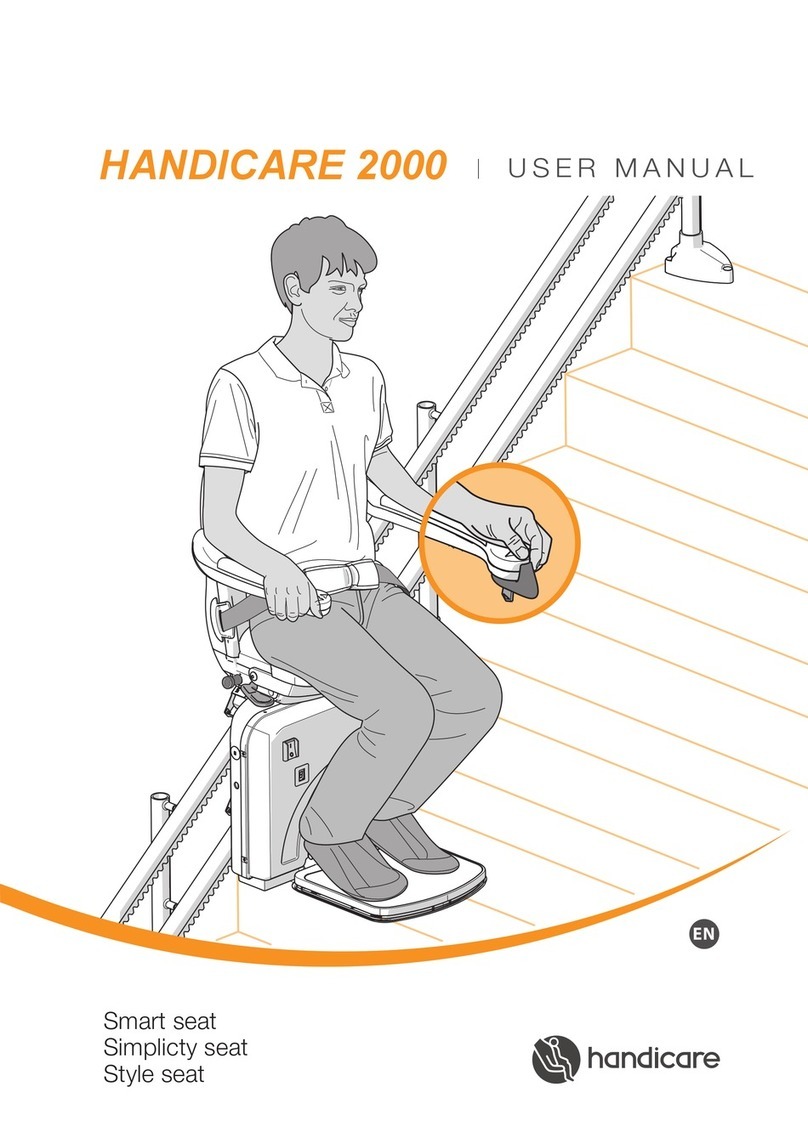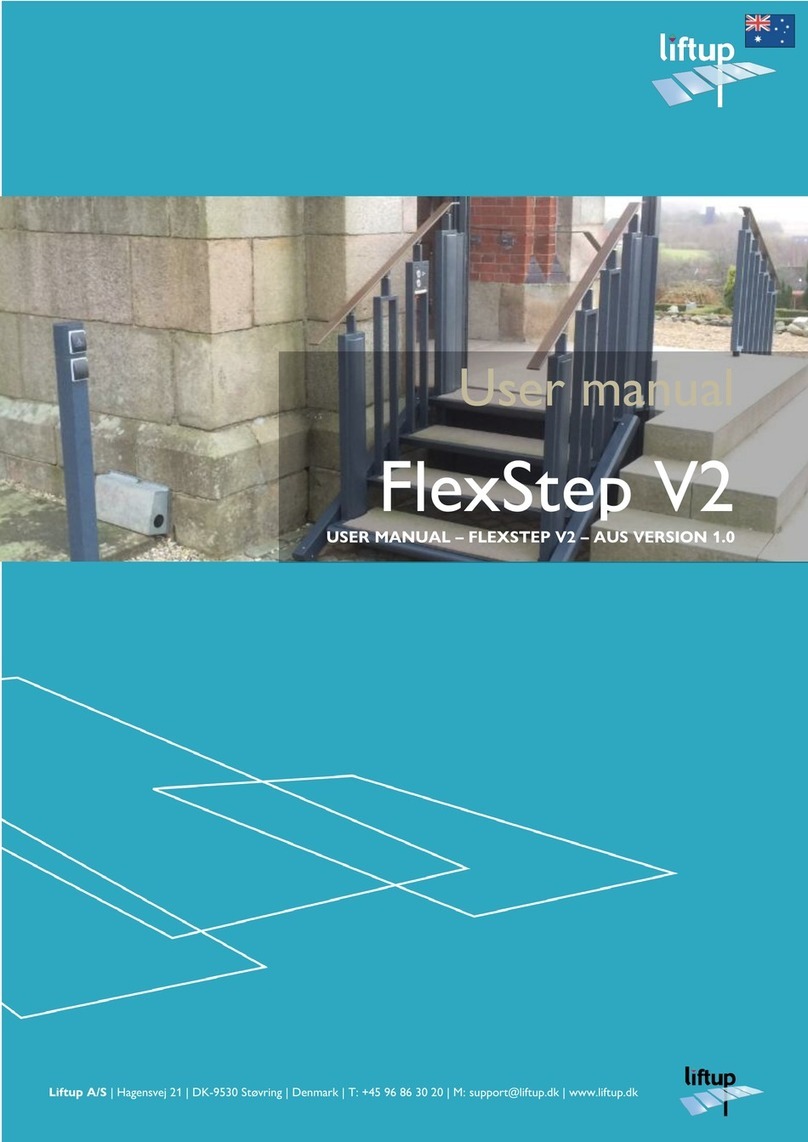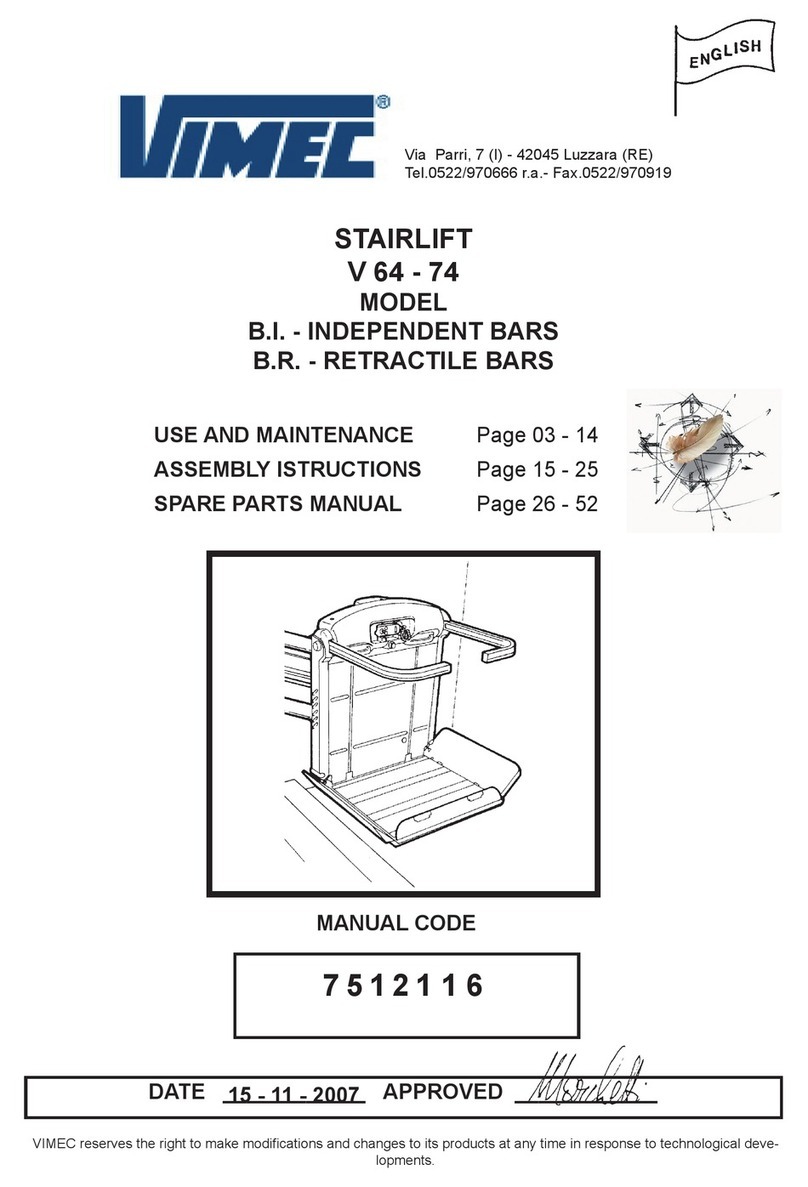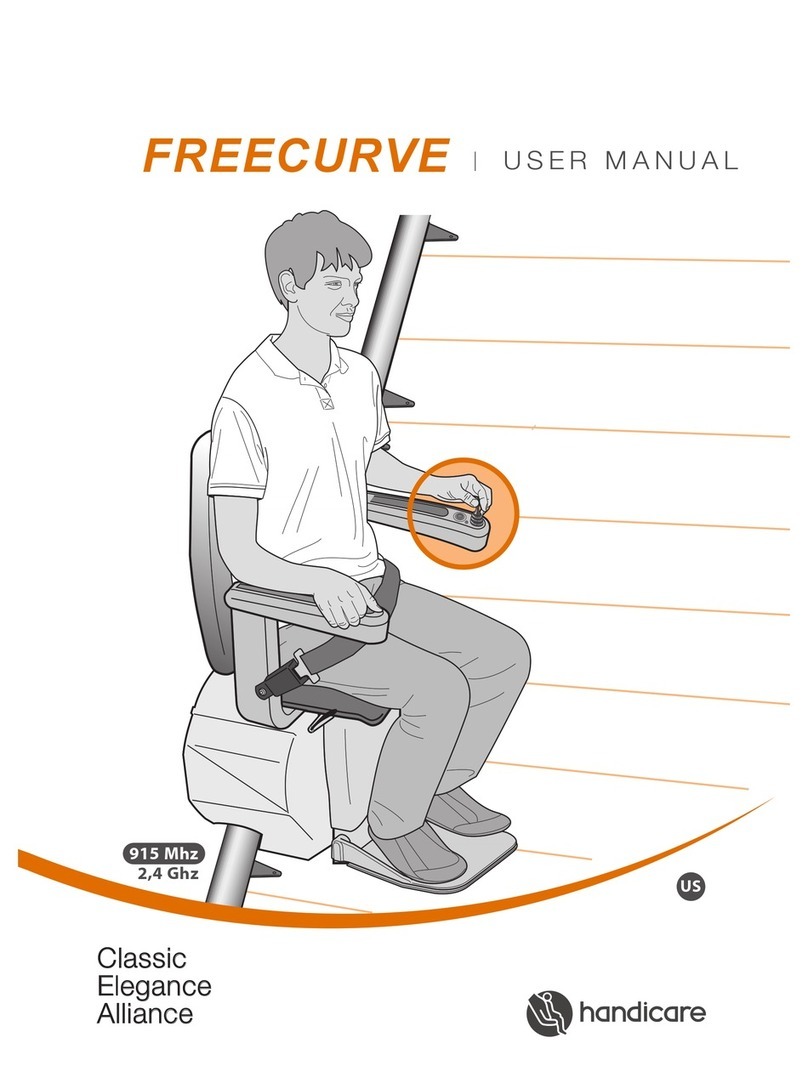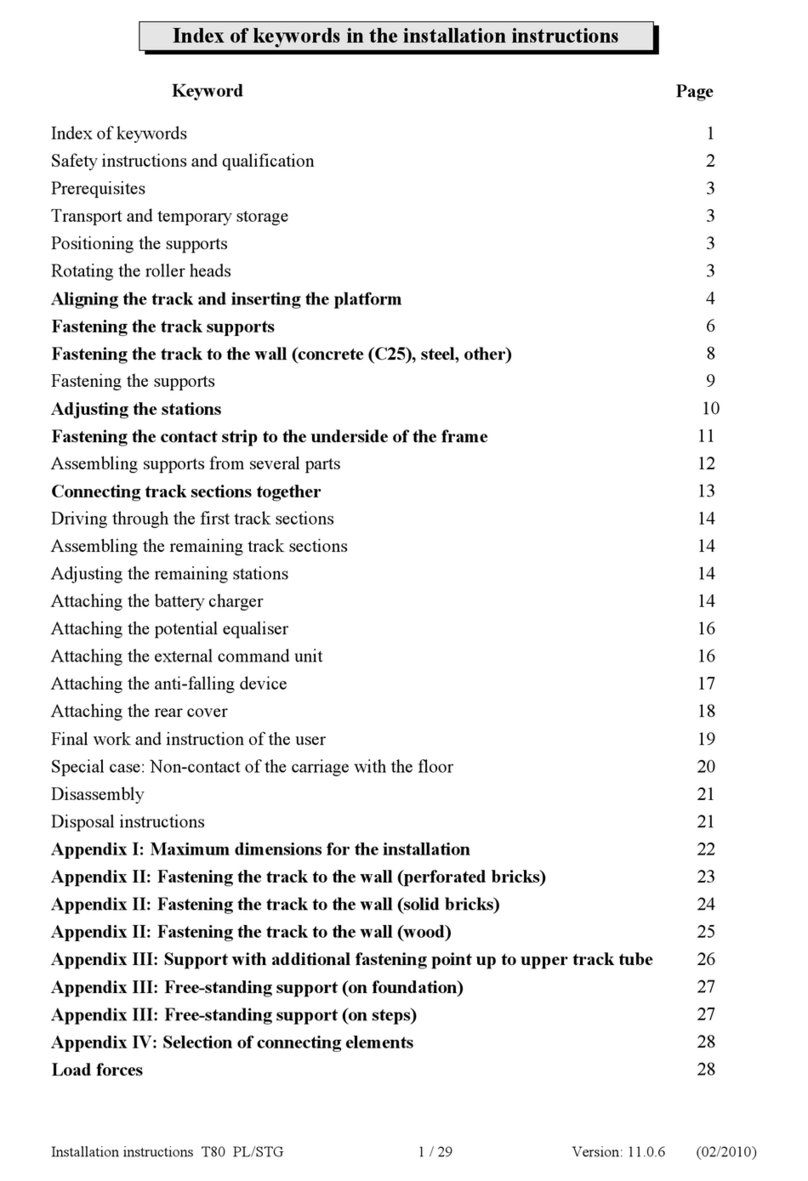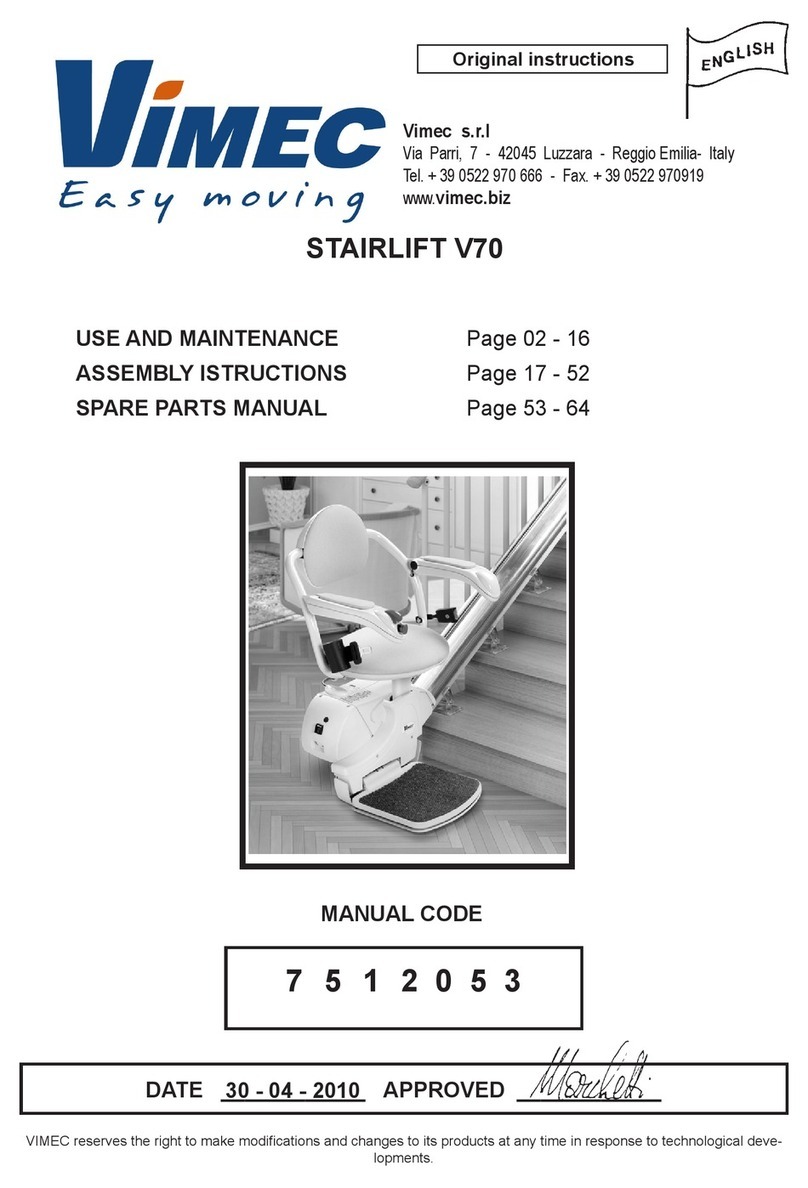
3©2009,1996 BRUNO INDEPENDENT LIVING AIDS, INC.®
SRE-1550 02-09-2009
SPECIFICATIONS AND REGULATORY INFORMATION ..........4
CARTON CONTENTS ...................................5
INSTALLATION
Tools Necessary for Installation . . . . . . . . . . . . . . . . . . . . . . . . .6
Mounting the Lower Bumper Bracket . . . . . . . . . . . . . . . . . . . . .7
FittingtheRail.....................................7
ApplicationGuide.................................8-9
CuttingtheRail ...................................10
Rail Joint Assembly .................................11
Positioning Foot Clamp Assemblies ......................12
Mounting the Carriage on the Upper Rail ..................13
Adjusting the Carriage Angle . . . . . . . . . . . . . . . . . . . . . . . . . . 13
Mounting the Upper Bumper Bracket.....................14
Installing the Seat and Footrest Assemblies ............. 16-17
Seat Swivel and Seat Arm Adjustment . . . . . . . . . . . . . . . . . . . 18
Final Limit Switch and Ramp Actuation . . . . . . . . . . . . . . . . 19-20
UpperBumperBracket ..............................24
ELECTRICAL
Connecting the Battery Charger ........................14
Routing the Wiring Harness ........................ 14-15
Safety Switches ...................................17
Call/Send Transmitters . . . . . . . . . . . . . . . . . . . . . . . . . . . 19-23
Circuit Board Diagnostics.......................... 24-25
Battery Charger LED's and Fuse ........................26
Learning the Remote IR Transmitter .................. 27-28
Circuit Breaker....................................28
LUBRICATION ......................................29
TESTING ELEVATOR OPERATION ........................30
CONVERSION TO RIGHT-HAND OPERATION ...............31
OVERSPEED (COMMERCIAL ONLY) .......................32
ADJUSTMENTS
Speed ..........................................33
Seat Height ......................................33
YEARLY MAINTENANCE OPERATIONS ....................34
BELT REPLACEMENT NOTE .............................34
TROUBLESHOOTING............................... 35-36
WIRING SCHEMATIC .................................37
EXPLODED VIEW AND BILL OF MATERIALS ............. 38-41
LIMITED WARRANTY .................................42
TABLE OF CONTENTS
